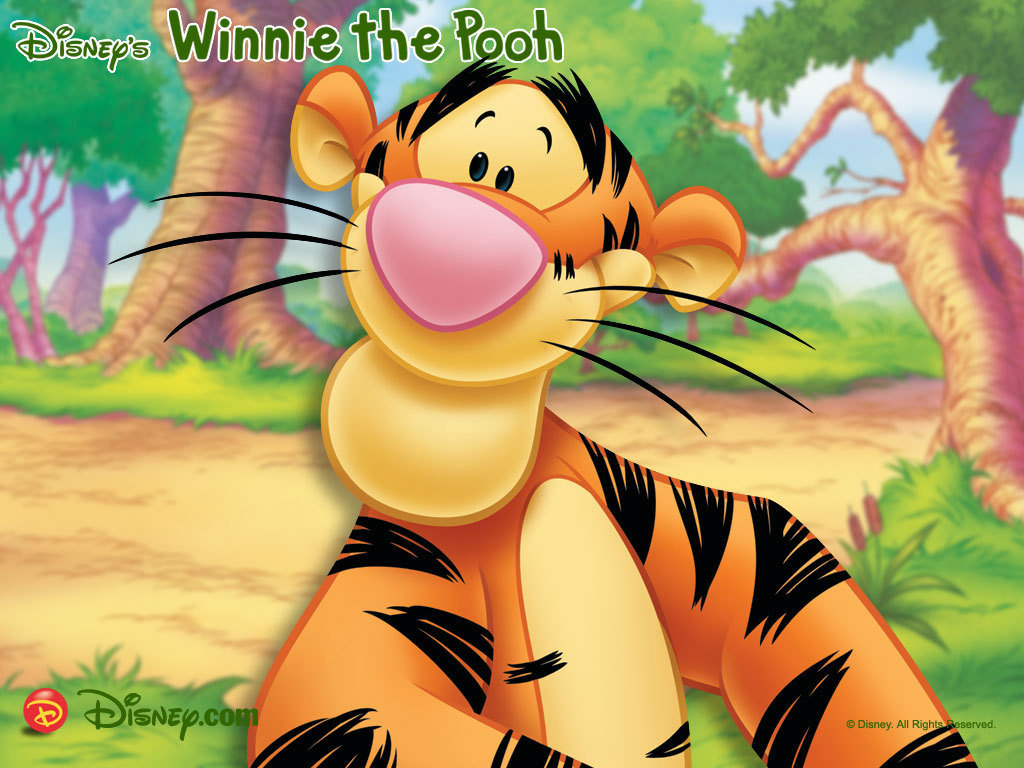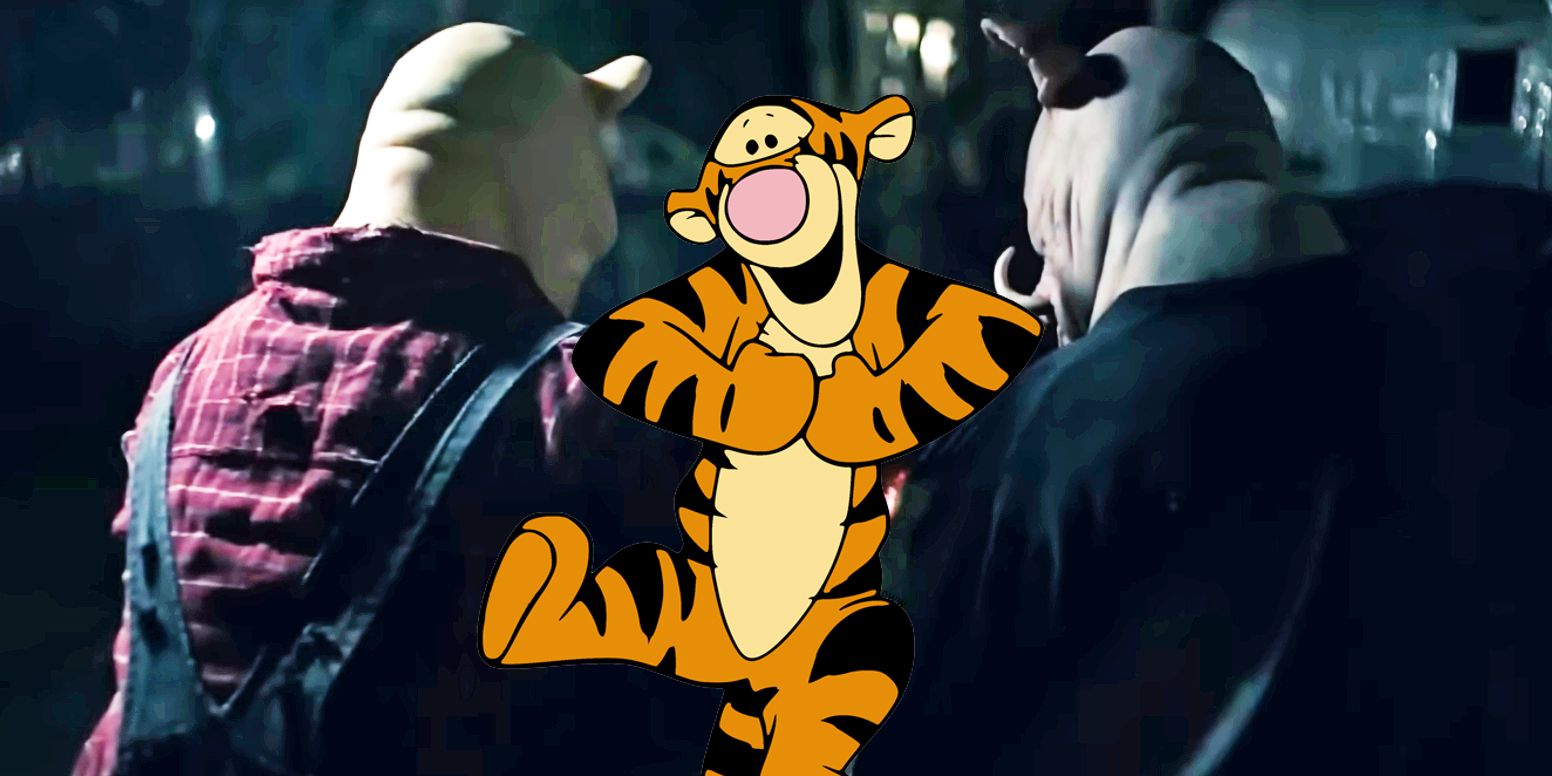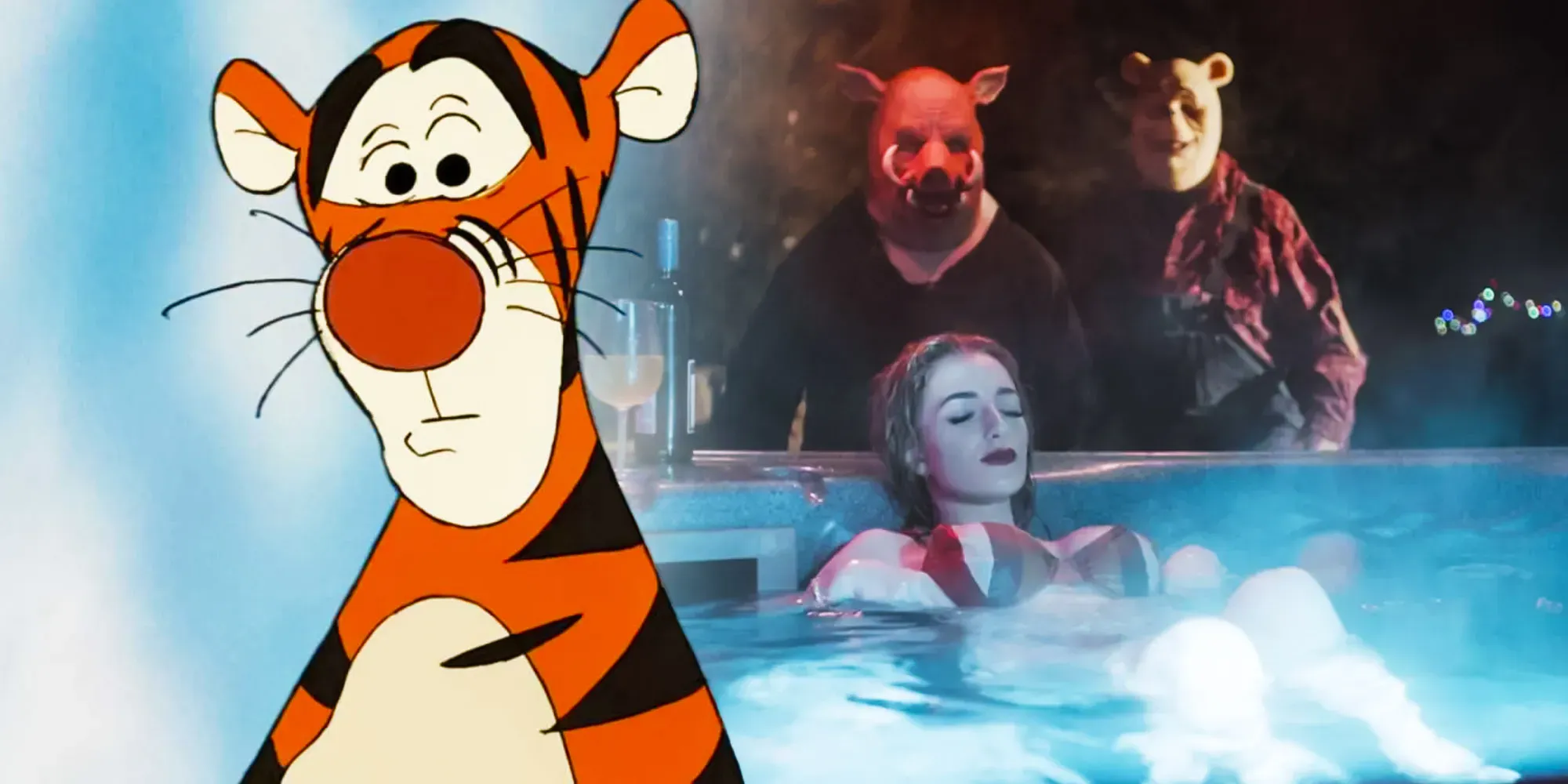The Unforgettable Bounce: Exploring The Voice Of Tigger Winnie The Pooh
Few sounds in the realm of animated characters are as instantly recognizable and joyously infectious as the voice of Tigger Winnie the Pooh. That distinctive, boisterous, and endlessly optimistic "hoo-hoo-hoo-hoo!" has resonated with generations, becoming synonymous with boundless energy and an unshakeable zest for life. It's a vocal performance that doesn't just animate a character; it defines him, imbuing the striped, bouncy tiger with a personality that leaps off the screen and into our hearts.
This article delves deep into the fascinating journey of Tigger's iconic voice, tracing its evolution through the talented individuals who have brought him to life. From the subtle nuances of early portrayals to the definitive performances that cemented his place in popular culture, we'll explore the artistry, dedication, and sheer vocal prowess required to maintain the integrity of such a beloved character. Join us as we uncover the secrets behind the bounce, the roar, and the lasting legacy of Tigger's unforgettable sound.
Table of Contents
- The Enduring Legacy of Tigger's Iconic Roar
- The Original Bounce: Sterling Holloway and the Birth of Tigger's Voice
- The Bouncing Baton: Paul Winchell's Definitive Tigger
- The Modern Roar: Jim Cummings and the Continuity of Tigger's Voice
- Beyond the Microphone: The Art and Craft of Voice Acting for Tigger
- The Voice's Reach: How Tigger's Sound Connects Across Platforms
- The Psychological Impact of Tigger's Voice on Audiences
- The Future of Tigger's Voice: Preserving an Icon
The Enduring Legacy of Tigger's Iconic Roar
Tigger, the exuberant tiger from A.A. Milne's Hundred Acre Wood, is a character defined by his boundless energy and unique personality. He doesn't just walk; he bounces. He doesn't just talk; he exclaims. And at the heart of this vibrant persona is his voice. The distinct vocal quality of Tigger is more than just a set of spoken lines; it's an auditory manifestation of his very being. It conveys his irrepressible optimism, his playful mischief, and his unwavering belief in the power of a good bounce. Without his characteristic vocalizations, Tigger would simply be a striped plush toy. It is the voice that transforms him into a living, breathing, and utterly captivating character. From his first appearance in Disney's "Winnie the Pooh and the Blustery Day" in 1968, Tigger quickly became a fan favorite, largely due to the spirited performances of his voice actors. His catchphrases, like "T-I-double-Guh-ER!" and "That's what Tiggers do best!", are etched into the collective memory of generations. This vocal consistency across decades and various media – from animated shorts and feature films to television series and video games – speaks volumes about the meticulous care taken to preserve the essence of the character. The voice of Tigger is a testament to the power of voice acting, demonstrating how a singular vocal performance can shape and sustain a character's enduring appeal. It's a legacy built on joy, enthusiasm, and a whole lot of bouncing.The Original Bounce: Sterling Holloway and the Birth of Tigger's Voice
While many associate Tigger's voice with later actors, the very first animated iteration of Tigger, in "Winnie the Pooh and the Blustery Day" (1968), was brought to life by the legendary Sterling Holloway. Holloway, a prolific voice actor for Disney, had already lent his distinctive, gentle, and often whimsical voice to many iconic characters, including Winnie the Pooh himself (in earlier shorts), the Cheshire Cat in "Alice in Wonderland," Kaa in "The Jungle Book," and Mr. Stork in "Dumbo." His portrayal of Tigger was brief but foundational, capturing the character's initial spark of enthusiasm and setting the stage for the vocal persona that would evolve. Holloway's Tigger was slightly softer, perhaps a bit more innocent, reflecting the character's introduction to the Hundred Acre Wood. While his time as Tigger was short-lived before another actor took over for the character's more prominent appearances, his contribution is vital. He was the first to give vocal life to the animated tiger, laying down the initial vocal blueprint for the character's signature bounciness and optimistic outlook. His voice, characterized by a slightly raspy, high-pitched warmth, gave Tigger a unique charm that was distinct from his other famous roles, proving his versatility as a voice artist.| Sterling Holloway: Personal Data & Biodata | |
|---|---|
| Full Name | Sterling Price Holloway Jr. |
| Born | February 14, 1905, Cedartown, Georgia, U.S. |
| Died | November 22, 1992 (aged 87), Los Angeles, California, U.S. |
| Occupation | Actor, Voice Actor |
| Years Active | 1926–1990 |
| Notable Voice Roles | Winnie the Pooh, Cheshire Cat (Alice in Wonderland), Kaa (The Jungle Book), Mr. Stork (Dumbo), Tigger (initial appearances) |
Sterling Holloway: A Voice Acting Pioneer
Sterling Holloway's career spanned over six decades, making him one of Hollywood's most enduring character actors. His distinctive voice, often described as reedy, high-pitched, and slightly nasal, made him a natural fit for animated characters. He was a master of conveying innocence, charm, and a touch of eccentricity through his vocal performances. Beyond his work for Disney, Holloway also had a significant career in live-action films and television, often playing quirky or gentle characters. His ability to bring warmth and personality to his roles, whether on screen or behind the microphone, solidified his status as a pioneering voice actor. His early contribution to the voice of Tigger, though brief, remains a significant part of the character's vocal history, showcasing the initial interpretation of Tigger's joyous spirit.The Bouncing Baton: Paul Winchell's Definitive Tigger
For many, the definitive voice of Tigger Winnie the Pooh is synonymous with Paul Winchell. Taking over the role after Sterling Holloway, Winchell voiced Tigger for over three decades, beginning with "Winnie the Pooh and the Many Adventures of Winnie the Pooh" (1977) and continuing through numerous shorts, television series like "The New Adventures of Winnie the Pooh," and feature films. Winchell's portrayal amplified Tigger's boisterousness, giving him the iconic, deep, gravelly yet enthusiastic tone that most fans recognize instantly. His "hoo-hoo-hoo-hoo!" was not just a sound; it was an expression of pure, unadulterated joy and an invitation to bounce along. Winchell, a renowned ventriloquist, comedian, and inventor, brought a unique energy to the role. His background in ventriloquism undoubtedly contributed to his exceptional vocal control and ability to imbue Tigger with such a distinct personality. He mastered the vocal inflections that conveyed Tigger's boundless energy, his occasional clumsiness, and his deep affection for his friends. Winchell's performance was so impactful that it became the benchmark for all subsequent voice actors, ensuring that the essence of Tigger's voice remained consistent and beloved. He truly cemented the vocal identity of the character, making Tigger a household name through his vibrant and unforgettable delivery.| Paul Winchell: Personal Data & Biodata | |
|---|---|
| Full Name | Paul Winchell |
| Born | December 21, 1922, New York City, New York, U.S. |
| Died | March 24, 2005 (aged 82), Los Angeles, California, U.S. |
| Occupation | Ventriloquist, Voice Actor, Comedian, Inventor |
| Years Active | 1940s–2004 |
| Notable Voice Roles | Tigger (Winnie the Pooh), Gargamel (The Smurfs), Dick Dastardly (Wacky Races), Zummi Gummi (Adventures of the Gummi Bears) |
Paul Winchell's Unique Vocalistry and Enduring Impact
Paul Winchell's legacy extends far beyond his iconic voice work. As a highly successful ventriloquist, he performed with his dummies Jerry Mahoney and Knucklehead Smiff for decades, showcasing an incredible range of vocal abilities and comedic timing. This mastery of vocal manipulation was undoubtedly a key factor in his ability to craft such a memorable and distinct voice for Tigger. His Tigger wasn't just a voice; it was a performance that embodied the character's physical and emotional states. He captured the essence of Tigger's "bounciness" not just in his lines but in his very vocal delivery, making it sound as if the words themselves were bouncing. Winchell's Tigger became a cultural touchstone, beloved by millions, and his performance set a gold standard for how to bring an animated character to life with authenticity and infectious energy. His impact on the character's enduring popularity is immeasurable.The Modern Roar: Jim Cummings and the Continuity of Tigger's Voice
Following Paul Winchell's retirement from the role, the mantle of the voice of Tigger Winnie the Pooh was passed to another titan of the voice acting world: Jim Cummings. Cummings began voicing Tigger in 1989, initially sharing the role with Winchell before fully taking over. He has since become the longest-serving voice actor for Tigger, continuing to portray the character in countless productions, including "The Tigger Movie" (2000), "Winnie the Pooh" (2011), and the live-action film "Christopher Robin" (2018). Cummings faces the unique challenge of not only embodying the character but also faithfully continuing the vocal legacy established by his predecessors, particularly Winchell. Cummings's approach to Tigger's voice is a remarkable blend of homage and personal interpretation. He meticulously studied Winchell's performance to capture the distinctive gravelly tone, the enthusiastic "hoo-hoo-hoo-hoo!", and the general effervescence that defines Tigger. Yet, he also brings his own warmth and nuance to the character, ensuring that Tigger remains vibrant and relevant for new generations. His ability to seamlessly transition between different characters and maintain vocal consistency across various media is a testament to his incredible talent and dedication. Jim Cummings is not just voicing Tigger; he is preserving an icon, ensuring that the character's beloved sound continues to bounce joyfully into the future.| Jim Cummings: Personal Data & Biodata | |
|---|---|
| Full Name | James Jonah Cummings |
| Born | November 3, 1952, Youngstown, Ohio, U.S. |
| Occupation | Voice Actor, Singer |
| Years Active | 1984–present |
| Notable Voice Roles | Winnie the Pooh, Tigger (Winnie the Pooh), Darkwing Duck, Pete (Disney), Ray (The Princess and the Frog), Hondo Ohnaka (Star Wars: The Clone Wars) |
Jim Cummings: The Voice of a Generation and Beyond
Jim Cummings is arguably one of the most prolific and versatile voice actors of his generation, with a career spanning thousands of roles across animation, video games, and theme park attractions. His ability to voice both Winnie the Pooh and Tigger simultaneously, often in the same scene, is a remarkable feat of vocal artistry and control. Beyond the Hundred Acre Wood, Cummings has lent his voice to countless iconic characters, including Darkwing Duck, Pete (from Disney's Mickey Mouse universe), and Ray the firefly from "The Princess and the Frog." His success lies not just in his vocal range but in his deep understanding of character, allowing him to infuse each role with genuine emotion and personality. For Tigger, Cummings's dedication ensures that the character's voice remains a consistent source of joy and energy, faithfully carrying on the legacy of his predecessors while adding his own indelible mark.Beyond the Microphone: The Art and Craft of Voice Acting for Tigger
Voicing a character like Tigger is far more than simply reading lines. It's a demanding art form that requires immense vocal control, physical commitment, and a deep understanding of the character's psychology. The voice of Tigger, in particular, demands a unique set of skills: * **Vocal Stamina:** Tigger's energetic nature means his lines are often delivered with high intensity, requiring sustained vocal power. The actor must maintain this enthusiasm throughout long recording sessions without vocal fatigue. * **Distinctive Phrasing and Inflection:** Tigger's speech patterns are unique, often punctuated by exclamations and a rapid-fire delivery. The actors must master his signature "hoo-hoo-hoo-hoo!" and the specific way he pronounces words like "T-I-double-Guh-ER!" * **Physicality in Voice:** Voice actors often use their entire bodies to get into character. For Tigger, this might involve bouncing or making large gestures in the recording booth to translate that physical energy into the vocal performance. The "bounce" isn't just animated; it's felt in the voice. * **Emotional Range (within limits):** While primarily joyful, Tigger does experience moments of sadness, frustration, or concern. The voice actor must convey these emotions while staying true to Tigger's core optimistic personality. * **Consistency:** Over decades, multiple actors have voiced Tigger. The challenge is to maintain a recognizable vocal continuity, ensuring that Tigger always sounds like Tigger, regardless of who is behind the microphone. This requires meticulous study of previous performances and a commitment to preserving the character's established sound. The craft of bringing Tigger's voice to life is a testament to the skill of these voice actors, who don't just mimic a sound but embody the very spirit of the character, making him feel real and relatable to audiences worldwide.The Voice's Reach: How Tigger's Sound Connects Across Platforms
The enduring appeal of the voice of Tigger Winnie the Pooh isn't just about the vocal performance itself, but also how that voice reaches and connects with audiences across a multitude of platforms and devices in the modern era. In many ways, the way Tigger's voice operates in our lives today mirrors the ubiquitous nature of modern communication services. Consider how a unique and recognizable voice, much like a dedicated communication line, functions in our interconnected world. Just as a service like Google Voice gives you a phone number for calls, texts, and voicemails, Tigger's distinctive voice provides him with a unique sonic identity, allowing him to "communicate" his boundless energy and joy directly to us. This unique vocal line works on mobile devices, laptops, and even supported deskphones (like a classic television set), ensuring that Tigger's message of fun and friendship is always accessible. His voice, much like a digital communication platform, syncs across your devices so you can use the app in... well, in any form of media where Tigger appears! Whether you're watching a classic short on your smartphone, streaming a movie on your laptop, or playing a video game on a console, the authentic voice of Tigger seamlessly connects across these different platforms, maintaining his consistent character. This continuity is crucial for the immersive experience. Furthermore, the very concept of "voice" or "voicing" is a term used in phonetics and phonology to characterize speech sounds, with sounds described as either voiceless or voiced. Tigger's voice is profoundly "voiced" – full of vibrato, resonance, and energy, perfectly characterizing his lively personality. It's a sound that resonates deeply, much like a clear, strong signal on a telecommunication platform. The ability to access Tigger's voice means you can manage "calls" (his calls to adventure), "texts" (his bouncy, enthusiastic pronouncements), and "voicemails" (the lingering echoes of his laughter and catchphrases) with his unique sound signature. It allows audiences to stay connected across devices seamlessly, ensuring that Tigger's spirit is always just a click or a tap away. This widespread accessibility and consistent vocal identity are key to the character's lasting impact and his ability to continue delighting new generations, much like a robust business phone system with features to help grow your business, all from your personal phone anytime, anywhere, ensures constant connection. The voice of Tigger is a powerful communication tool in its own right, connecting hearts and minds across the digital landscape.The Psychological Impact of Tigger's Voice on Audiences
The voice of Tigger Winnie the Pooh does more than just entertain; it evokes powerful psychological responses in its audience. For many, hearing Tigger's familiar "hoo-hoo-hoo-hoo!" immediately triggers a wave of nostalgia, transporting them back to childhood memories of warmth, innocence, and simple joys. This nostalgic connection is a potent force, offering comfort and a sense of continuity in a rapidly changing world. Beyond nostalgia, Tigger's voice is inherently optimistic and energetic. Studies in sound and emotion suggest that certain vocal qualities can directly influence mood. Tigger's boisterous, slightly gravelly, yet always cheerful tone can be uplifting, inspiring a sense of playfulness and even resilience. His vocalizations often convey a "can-do
Bilinick: Tigger Winnie the Pooh

Why Winnie The Pooh: Blood & Honey Doesn't Include Tigger Explained

You Should Be Worried About Tigger’s Winnie-The-Pooh: Blood & Honey Absence